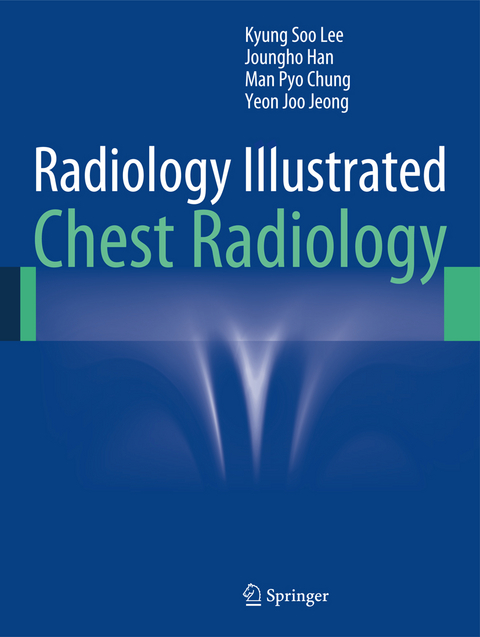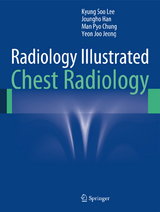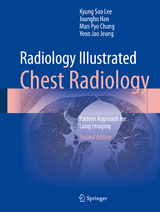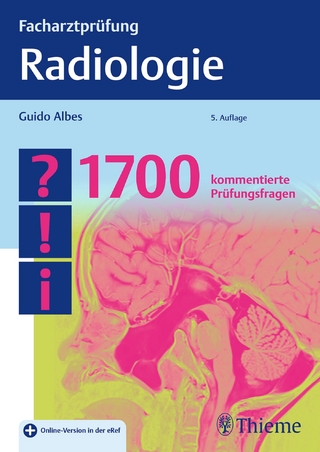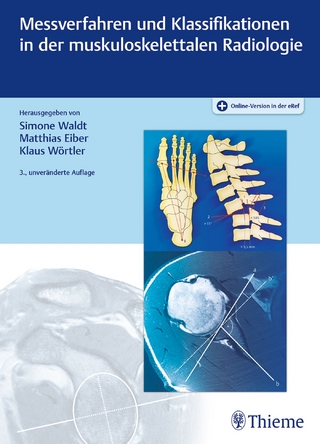Radiology Illustrated: Chest Radiology
Springer Berlin (Verlag)
978-3-642-37095-3 (ISBN)
- Titel erscheint in neuer Auflage
- Artikel merken
The purpose of this atlas is to illustrate how to achieve reliable diagnoses when confronted by the different abnormalities, or "disease patterns", that may be visualized on CT scans of the chest. The task of pattern recognition has been greatly facilitated by the advent of multidetector CT (MDCT), and the focus of the book is very much on the role of state-of-the-art MDCT. A wide range of disease patterns and distributions are covered, with emphasis on the typical imaging characteristics of the various focal and diffuse lung diseases. In addition, clinical information relevant to differential diagnosis is provided and the underlying gross and microscopic pathology is depicted, permitting CT-pathology correlation. The entire information relevant to each disease pattern is also tabulated for ease of reference. This book will be an invaluable handy tool that will enable the reader to quickly and easily reach a diagnosis appropriate to the pattern of lung abnormality identified on CT scans.
Kyung Soo Lee, MD PhD Department of Radiology, Samsung Medical Center Sungkyunkwan University School of Medicine Joungho Han, MD PhD Department of Pathology, Samsung Medical Center Sungkyunkwan University School of Medicine Man Pyo Chung, MD PhD Division of Pulmonary and Critical Care Medicine, Department of Medicine, Samsung Medical Center Sungkyunkwan University School of Medicine Yeon Joo Jeong, MD PhD Department of Radiology, Pusan National University Hospital Pusan National University School of Medicine and Medical Research Institute
Chapter 1 Focal Lung Diseases.- Ch 1-1 Nodule.- Ch 1-1a Solid nodule.- Ch 1-1b Ground-glass opacity nodule.- Ch 1-2 Mass.- Ch 1-3 Consolidation.- Ch 1-3a Lobar consolidation.- Ch 1-3b Nodular consolidation.- Ch 1-4 Reticular or linear pattern.- Ch 1-5 Comet tail sign.- Ch 1-6 CT halo sign.- Ch 1-7 Galaxy sign.- Ch 1-8 Reversed halo sign.- Ch 1-9 Tree-in-bud sign.- Ch 1-10 Gloved-finger or tooth-paste sign.- Ch 1-11 Decreased opacity with cystic airspace.- Ch 1-11a Decreased opacity with cystic airspace wall, cavity.- Ch 1-11b Decreased opacity with cystic airspace wall, cyst.- Ch 1-12 Decreased opacity without cystic airspace.- Ch 1-12a Decreased opacity without cystic airspace, mosaic perfusion.- Ch 1-12 b Decreased opacity without cystic airspace, airway disease.- Ch 1-12 Air crescent sign.- Ch 1-13 signet ring sign.- Chapter 2 Diffuse Lung Diseases.- Ch 2-1 Interlobular septal thickening.- Ch 2-1a Smooth thickening.- Ch 2-1b Nodular thickening.- Ch 2-2 Intralobular lines.- Ch 2-2a Intralobular lines with reticulation.- Ch 2-2b Intralobular lines with interlobular septal thickening.- Ch 2-2c Intralobular lines with ground-glass opacity.- Ch 2-3 Honeycombing.- Ch 2-3a Honeycombing with subpleural or basal predominance.- Ch 2-3b Honeycombing with upper lung zone predominance.- Ch 2-4 Small nodular or micronodular pattern.- Ch 2-4a Small nodular lesions with centrilobular distribution.- Ch 2-4b Small nodular lesions with perilymphatic distribution.- Ch 2-4c Small nodular lesions with random (military) distribution.- Ch 2-4d Multiple nodular or mass or mass-like pattern.- Ch 2-5 Ground-glass opacity with reticulation.- Ch 2-5a Ground-glass opacity with reticulation and traction bronchiectasis.- Ch 2-5b Crazy-paving appearance.- Ch 2-6 Ground-glass opacity without reticulation.- Ch 2-6a Ground-glass opacity without reticulation and peripheral or patchy distribution.- Ch 2-6b Ground-glass opacity without reticulation and small nodules.- Ch 2-6c Ground-glass opacity without reticulation and diffuse distribution.- Ch 2-7 Consolidation.- Ch 2-7a Consolidation with diffuse distribution.- Ch 2-7b Consolidation with subpleural distribution.- Ch 2-8 Decreased opacity with cystic airspace.- Ch 2-8a Decreased opacity with cystic airspace and cystic wall (cavity and cysts).- Ch 2-8a1 Decreased opacity with cystic airspace and cystic wall, cavities.- Ch 2-8a2 Decreased opacity with cystic airspace and cystic wall, cysts.- Ch 2-8b Decreased opacity without cystic airspace but without wall (emphysema).- Ch 2-9 Decreased opacity without cystic airspace, mosaic attenuation.- Ch 2-9a Decreased opacity without cystic airspace, vascular.- Ch 2-9b Decreased opacity without cystic airspace, obstructive airway diseases.- Ch 2-10 Decreased opacity without cystic airspace, airway diseases.
"The primary purpose of this book is an ambitious attempt to cover the field of chest radiology in 283 pages. ... Radiology Illustrated - Chest Radiology certainly meets its intended aim, with its pattern approach format making it an enjoyable book to review thoracic radiology. It clearly meets the needs of a radiologist wanting a rapid reference book to support the daily reporting of chest CT studies or to revise chest radiology by a pattern approach." (Nicholas Screaton, RAD Magazine, April, 2015)
| Erscheint lt. Verlag | 20.12.2013 |
|---|---|
| Reihe/Serie | Radiology Illustrated |
| Zusatzinfo | XVII, 283 p. 167 illus., 93 illus. in color. |
| Verlagsort | Berlin |
| Sprache | englisch |
| Maße | 210 x 279 mm |
| Gewicht | 1294 g |
| Themenwelt | Medizinische Fachgebiete ► Radiologie / Bildgebende Verfahren ► Radiologie |
| Schlagworte | Brust • Computed tomography • Computertomographie • Computertomographie (CT) • Differential Diagnosis • Imaging-Pathology Correlation • Lung Diseases • Pattern Approach |
| ISBN-10 | 3-642-37095-0 / 3642370950 |
| ISBN-13 | 978-3-642-37095-3 / 9783642370953 |
| Zustand | Neuware |
| Haben Sie eine Frage zum Produkt? |
aus dem Bereich
